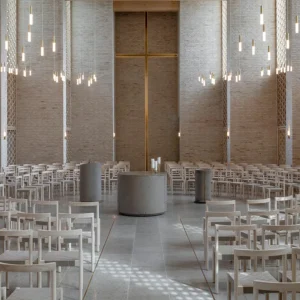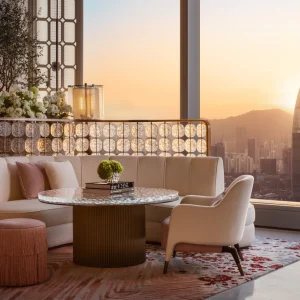Total Environment: Montréal, 1965-1975, currently on at the CCA in Montréal, is a remarkable exhibition curated by Alessandra Ponte from the University of Montréal with a group of her students. It recalls the optimistic moment in the history of mankind’s engagement with its surroundings when architecture stepped outside the modernist box in its pursuit of the age-old dream of a totally designed environment. The Expo 67 in Montreal had shown how art, architecture, and technology could be merged; contemporary critics like Reyner Banham and Sybil Moholy-Nagy pointed out that it was a built environment dominated by multi-media spaces, rather than conventional buildings, intermeshed with futuristic transportation systems. Thus environmental art had found one of its first large-scale realisations and, subsequently, it flourished at least in Montreal when the concept of the total environment began to invade the city in the form of art works, night clubs, underground publications, and even planned social housing projects.
 Futuribilia, Credit – Maurice Demers
Futuribilia, Credit – Maurice Demers
The exhibition team meticulously researched some of the protagonists of this phenomenon who had practiced in Montreal during that time. The result is a wonderfully eclectic collection of mostly never seen exhibits, among them architectural sketches, magazines, posters, movies, record covers, models, and life-size objects. Among the latter is the Introscaphe (1968-70) by Edmund Alleyn (1931-2004), an egg-shaped device that offered exactly 4 and a half minutes of immersion into a total environment by surrounding with video and sound everybody who felt it worthwhile both to pay two Franc and squeeze himself into some tiny, futuristic fauteuil on the inside.

Introscaphe - The Egg, Credit - Emund Alleyn Equally unconventional in format was a multi-sensuous sculpture called Metafunic Dryer (1970) by Marco Lepage (born 1945), which consisted of two fabric pouches that constantly inflated by an airstream bowed and bubbled gently on either side of any observer who happened to be in-between these soft breasts. Other schemes aimed to be more practical like Le Drug (1964-5) by François Dallegret (born 1937), today best known for the environmental bubble (1965) that illustrated Banham’s 1965 article ‘A Home is not a House’. Le Drug was a lightly-coloured, moulded interior for a, as the label explains, ‘bar-pharmacy-restaurant-discothèque-art gallery’; then and now, the total environment lacked clearly identifiable characteristics and, accordingly, names. Sadly, or perhaps predictably, Le Drug turned out to be difficult to clean and was dismantled after about a year or so. Thus, it shared the ephemeral existence of much of the pieces Ponte and her team have rescued from oblivion to which, most unfortunately, many exhibits will return at the end of the show as no catalogue has been produced; a major lacuna for an otherwise highly recommendable exhibition.
Volker M. Welter, University of California at Santa Barbara, is currently scholar in residence at the CCA.
Total Environment: Montréal, 1965-1975 is on at the Octagonal Gallery at the Canadian Centre for Architecture (CCA), Montréal, Québec, Canada, 19 March to 23 August, 2009







